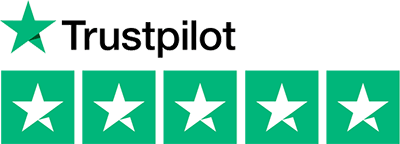If you’re looking to start your own business, a Sole Proprietorship is an easy way to get started. A Sole Proprietorship is a simple business entity in which one person, or a married couple, acts as the sole owner and operator.
Unlike a C Corporation or Limited Liability Company (LLC), you don’t have to register a Sole Proprietorship with the state or file an annual report and pay a fee each year to maintain good standing. Basically, you can form a Sole Proprietorship simply by having someone hire you to provide a product or service. By doing so without registering your business with your state, it is considered a Sole Proprietorship by default.
Advantages of forming a Sole Proprietorship:
- They’re easy and convenient to start, operate, and maintain.
- Because you don’t have to register with the state, there’s no paperwork or waiting time involved before starting your business.
- You can continue to pay your taxes as you always have, as Sole Proprietors are not taxed separately from their businesses.
- You are not subject to the fees that other business entities must pay to register and remain in good standing with the state.
Disadvantages of forming a Sole Proprietorship:
- Owners are subjected to unlimited personal liability. When you have a Sole Proprietorship, there is no separation between you and the business, or your personal and business assets. If you are sued or run up debt you can’t repay, you are personally responsible and your personal assets, including your savings, home, and other possessions could be at risk. Business insurance can give you some protection but may only cover certain situations or not provide sufficient money to cover damages.
- While filing and paying taxes as a Sole Proprietor is streamlined, there are some tax concerns to consider. You’ll need to pay self-employment taxes, which in 2025 total 15.3% of your earnings, in addition to state and federal income taxes. There’s also the possibility of business income increasing your personal taxable income and putting you into a higher tax bracket.
- Lenders are sometimes reluctant to work with Sole Proprietors, meaning you could find it difficult to raise capital if you want to expand the business or encounter other expenses.
- Growth opportunities also are limited by other factors, such as difficulty in finding and complexities with hiring employees, if you choose to do so.
- An inability to add partners and remain a Sole Proprietorship.
- Difficulty should you want to sell the business, since there is no formal business registration, and therefore, no means of transferring it to another person.
- In some cases, a Sole Proprietorship is perceived as unprofessional.
While there are many advantages to starting a Sole Proprietorship, there also are some significant downsides to this type of business structure. It is important to weigh the pros and cons so you could choose the best formation option for your new business.
Seven Steps to Forming a Sole Proprietorship
Sole Proprietors perform a wide variety of work, ranging from childcare to landscaping to financial consulting. What they have in common is that each owns and operates a one-person business enterprise. Getting started is easy, but there are some formalities you should attend to when forming a Sole Proprietorship, starting with choosing and registering a business name.
- Pick and register a name – You can run a business using your full, legal name without registering it, but if you want to use a name other than your own, you’ll need to file for a DBA, or “doing business as.” Requirements for registering a DBA vary. You may have to register with the state, county, or city in which your business is located. You’ll probably have to fill out some forms and pay a filing fee to register, and you may have to place an ad announcing the name in a local newspaper or business publication. Before finalizing a name for your business, look at available domain names and social media handles that you might consider when creating a website or setting up a social media account. Ideally, these names will be as close to your business name as possible, so coordinate your efforts by considering what you’ll use for each.
- Consider an EIN – A Sole Proprietor with no employees isn’t required to get a Employer Identification Number (EIN), which identifies your business for tax purposes. There are, however, some advantages to doing so, such as making it easier to open a business bank account, allowing you to keep your Social Security number private, and paving the way for growing your business by hiring employees. You can apply for an EIN for free on the IRS website. If the application is approved, you’ll get your EIN immediately.
- Open a business bank account – Again, a Sole Proprietor is not required to have a business bank account, but it makes filing your taxes easier and will be beneficial if you are ever audited. Also, having separate personal and business accounts lets you better track the financial health of the business.
- Obtain the necessary business licenses or permits – While a Sole Proprietorship is not registered with the state, it may be required to obtain federal, state, or local business licenses and permits, depending on the industry and type of business. If you open a day care center or a bakery, for instance, you’d need certain licenses to do so. The Small Business Association website has information about federal permits, while your state and local municipality can inform you of any licenses necessary at those levels.
- Register for tax purposes – Depending on where your business is located, you might have to register it for tax purposes. Some states and local municipalities impose additional business taxes on Sole Proprietorships, and you may be subject to certain business property taxes, so check with your state and county tax authorities.
- Check other tax requirements – Sole Proprietors are not taxed separately from their businesses, but file business profits and losses on their personal income tax forms. If you expect to owe at least $1,000 in taxes when your annual return is filed, however, you’ll probably be required to make quarterly estimated tax payments, which you do using IRS Form 1040-ES, Estimated Tax for Individuals. You’ll also need to pay self-employment taxes using a schedule SE, and if you outsource tasks to an independent contractor and pay them more than $600 during a tax year, you’ll need to provide a 1099-MISC form so they can report those earnings to the IRS. It’s a good idea to talk to an accountant or tax professional about your tax obligations, as remaining in compliance is vital.
- Buy insurance – A Sole Proprietorship does not come with liability insurance, so if you operate a business from your home, sell a product, or transport people in your car, you should look into insurances to safeguard you and your business. General liability insurance is also available for Sole Proprietorships, so consider what you need and make sure you’re covered.
Making the Smartest Choice
There are many reasons why entrepreneurs favor Sole Proprietorships and choose them more often than any other business structure when starting a business. It’s quite possible to form a business as a Sole Proprietor and operate it within that structure for its entirety, but it’s not always the smartest choice.
It’s my opinion that the exposure to unlimited personal liability that threatens Sole Proprietors is too big a risk to take and that entrepreneurs should consider forming another type of business entity, namely a Limited Liability Company or a C Corporation.
These entities, which are registered with the state and provide liability protection, are more difficult to get started than a Sole Proprietorship, but not overly complicated and, I would argue, well worth the trouble and expense.
Think carefully about the business structure that makes the most sense for you, considering how much personal liability risk you’re willing to take on and other factors. If you decide a Sole Proprietorship is not your best choice, CorpNet can work with you to assure the successful formation of an LLC or Corporation.
Interested in Learning More?
If you’d like to continue learning about Sole Proprietorships, we have additional content available for your review.
- What You Need to Know About Sole Proprietorships
- Eleven Disadvantages of Choosing a Sole Proprietorship
- Sole Proprietorship vs. Partnership
- Sole Proprietorship vs. LLC
- Does a Sole Proprietorship Need Liability Insurance?
- How Do You Pay Yourself as a Sole Proprietor?
- Can a Sole Proprietor Have Employees?
Download Our Starting a Business Checklist
Our How to Start a Business Checklist is written by the Business Attorneys at CorpNet and will guide you through the process of starting your new business. It includes everything from naming your business to writing a marketing plan.





